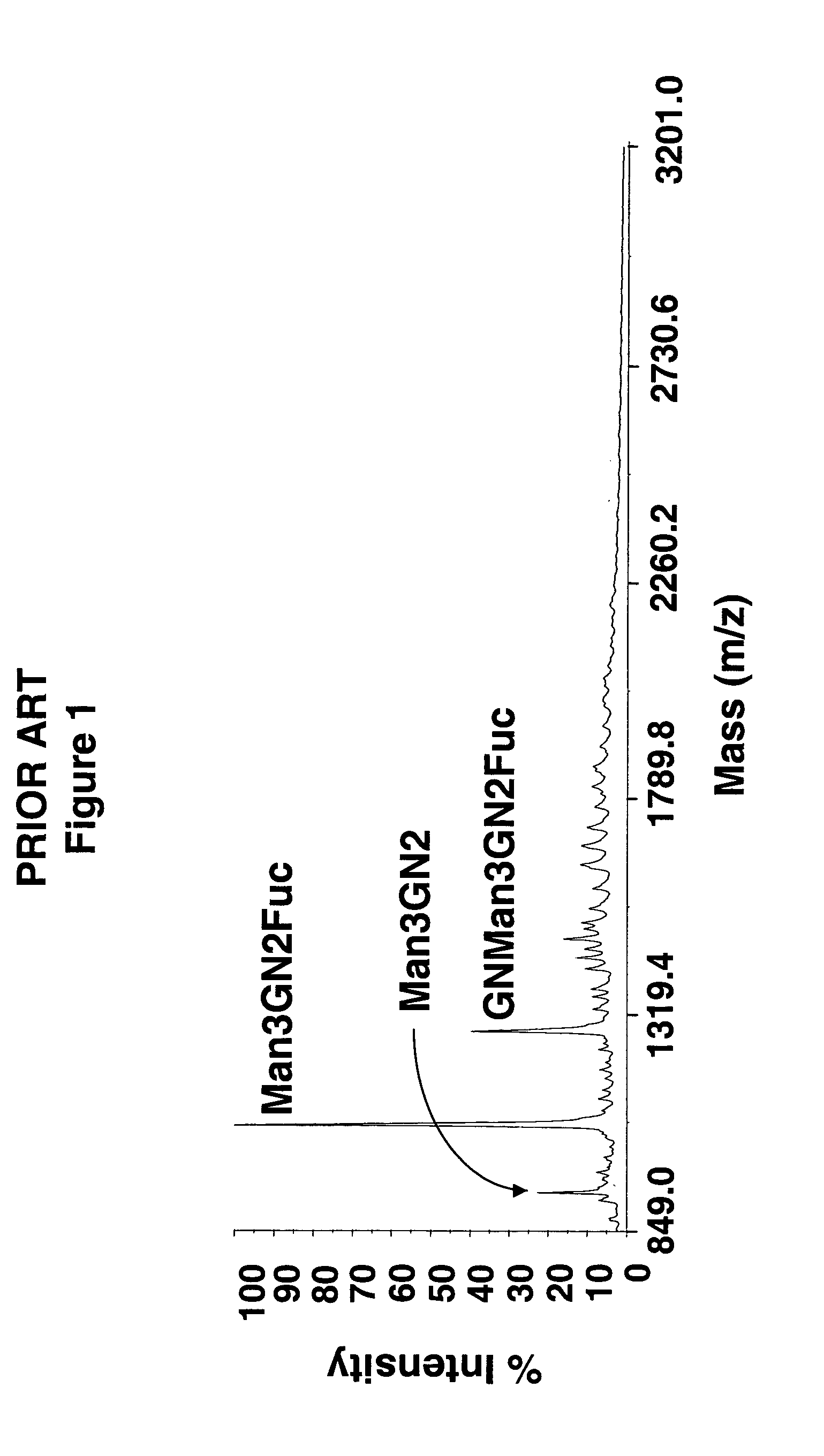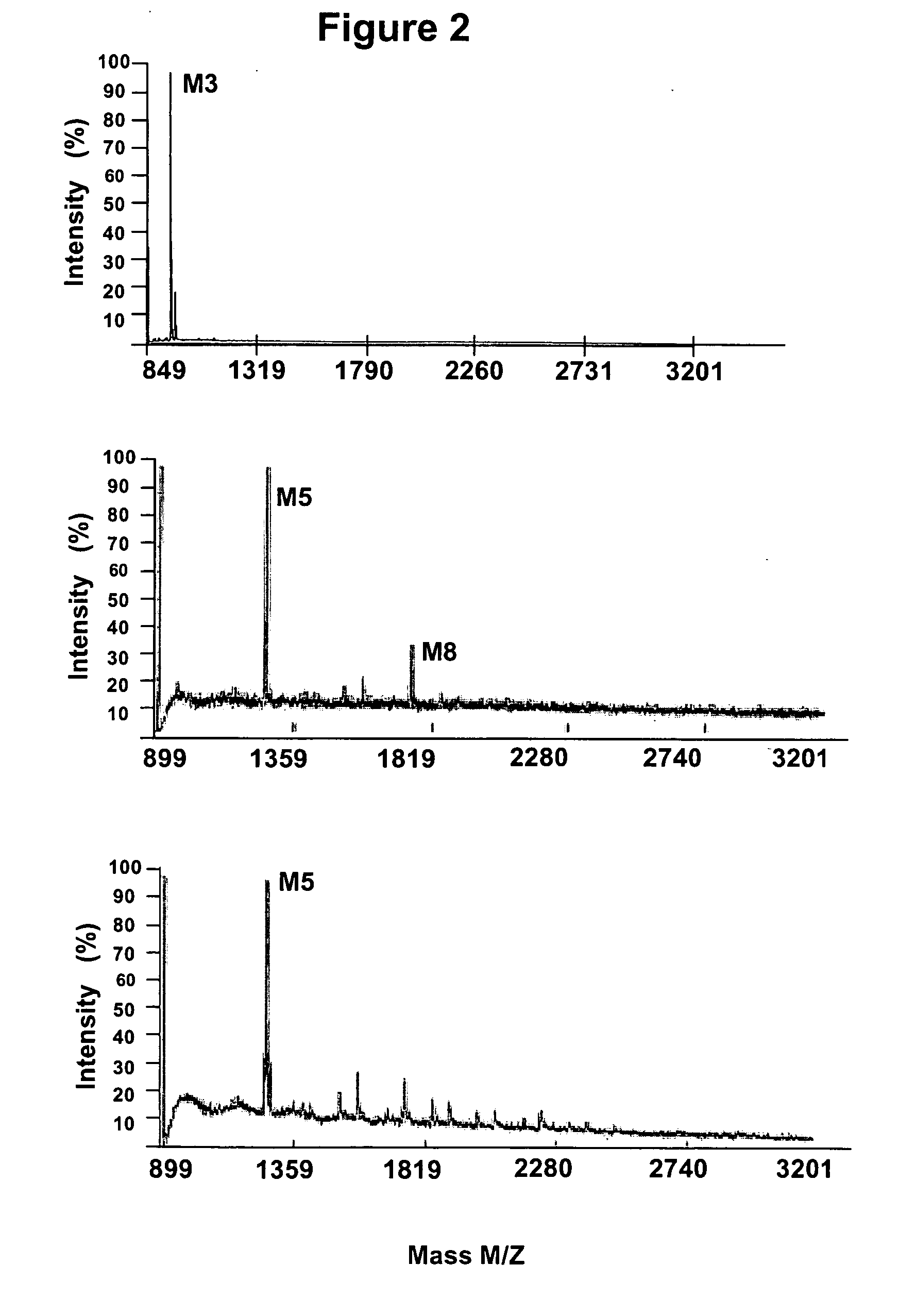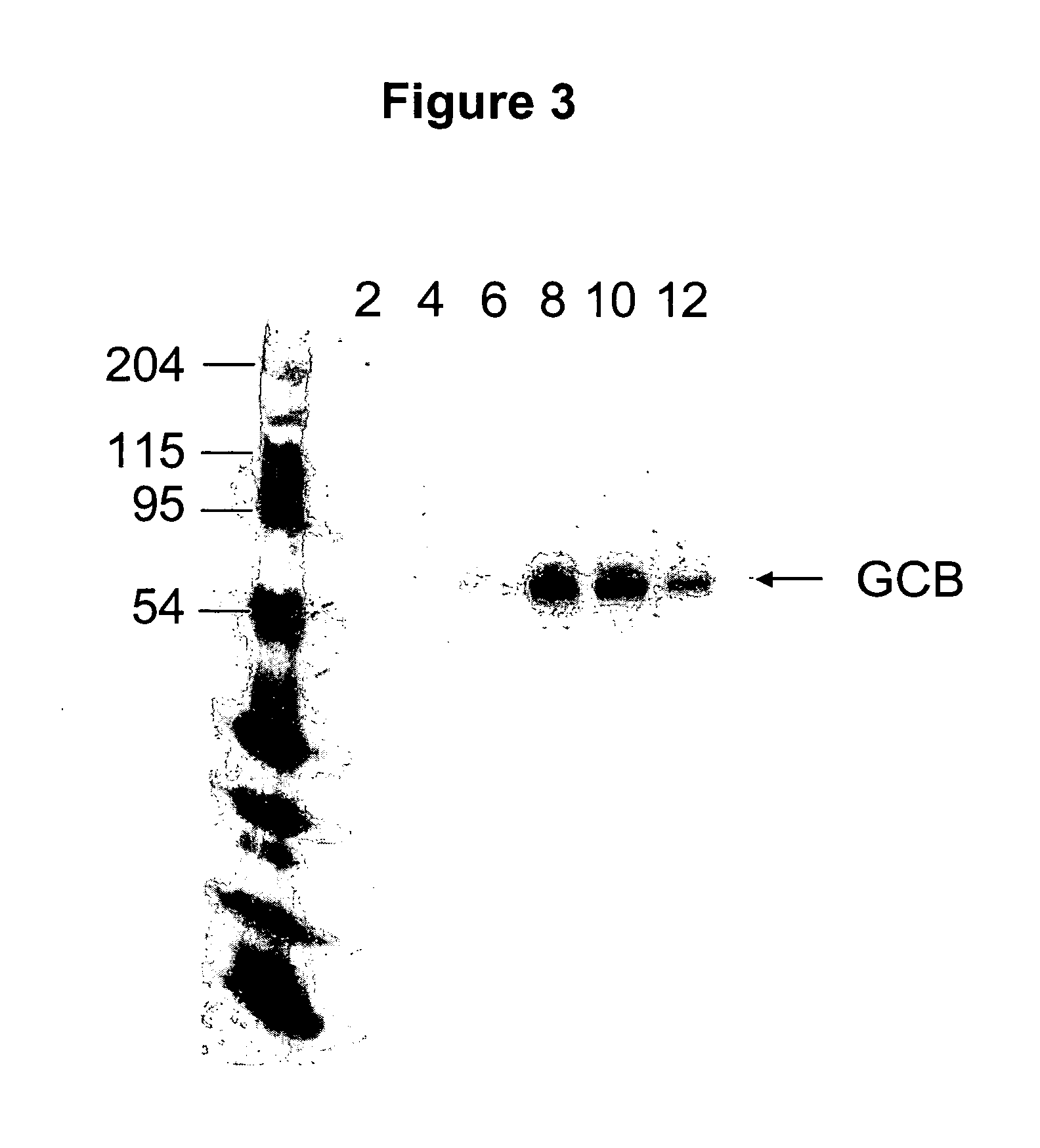Glycosylated glucocerebrosidase expression in fungal hosts
- Summary
- Abstract
- Description
- Claims
- Application Information
AI Technical Summary
Benefits of technology
Problems solved by technology
Method used
Image
Examples
example 1
[0112] Materials
[0113] Restriction and modification enzymes were from New England BioLabs. Oligonucleotides were obtained from the Dartmouth College Core facility (Hanover, N.H.) or Integrated DNA Technologies (Coralville, Iowa). The enzymes, peptide N-glycosidase F, mannosidases, and oligosaccharides were obtained from Glyko (San Rafael, Calif.). Metal chelating HisBind resin was from Novagen. Matrix-assisted laser desorption ionization.
example 2
[0114] Expression of Glucocerebrosidase in P. pastoris.
[0115] Glucocerebrosidase DNA (BC 003356) (SEQ ID NO: 1) (Tsuji et al., J Biol Chem 261, 50-53, 1986) is cloned into a pPICZA vector (Invitrogen) having the AOXI promoter and AOX1 terminal sequences. Using primers GBA / UP 5′AGCGCTAGACCATGTATTCCTAAGTCCTTCGGTT 3′ (SEQ ID NO:2) and GBA / LP 5′GGTACCTTATTGTCTGTGCCACAAGTAGGTGTGGAT 3′ (SEQ ID NO:3), GCB was subcloned into the multiple cloning site as an AfeI-KpnII fragment along with an upstream S. cerevisiae killer toxin signal sequence (EcoRI-AfeI fragment), which was codon optimized for P. pastoris, resulting in pBK376. The killer toxin signal sequence and the GCB gene were then excised as one EcoRI-KpnI fragment and cloned into a pPICZA-derived vector upstream of 3 glycine and 9 histidine sequences, resulting in pBK406. This pBK406 plasmid was transformed into various P. pastoris strains. Induction of the glucocerebrosidase gene is controlled by the methanol-inducible AOX1 promoter....
example 3
[0117] Glucocerebrosidase Protein Isolation
[0118] A 10 ml culture of buffered glycerol-complex medium (BMGY) consisting of 1% yeast extract, 2% peptone, 100 mM potassium phosphate buffer (pH 6.0), 1.34% yeast nitrogen base, 4×10−5% biotin, and 1% glycerol was inoculated with a fresh colony of a P. pastoris strain transformed with glucocerebrosidase (e.g. YSH44, BK64-1, YSH44 or Δalg3Δoch1) and grown for 2 days. The culture was then transferred into 100 mls of fresh BMGY in a 1 liter flask for 1 day. This culture is then centrifuged and the cell pellet washed with BMMY (buffered minimal methanol: same as BMGY except 0.5% methanol instead of 1% glycerol). The cell pellet was resuspended in BMMY to a volume ⅕ of the original BMGY culture and placed in 1.5 liter fermentation reactor for 24 h. The secreted protein was harvested by pelleting the biomass by centrifugation and transferring the culture medium to a fresh tube. The collected supernatant His-tagged GCB was then purified on a N...
PUM
| Property | Measurement | Unit |
|---|---|---|
| Length | aaaaa | aaaaa |
| Length | aaaaa | aaaaa |
| Mass | aaaaa | aaaaa |
Abstract
Description
Claims
Application Information
 Login to View More
Login to View More - R&D
- Intellectual Property
- Life Sciences
- Materials
- Tech Scout
- Unparalleled Data Quality
- Higher Quality Content
- 60% Fewer Hallucinations
Browse by: Latest US Patents, China's latest patents, Technical Efficacy Thesaurus, Application Domain, Technology Topic, Popular Technical Reports.
© 2025 PatSnap. All rights reserved.Legal|Privacy policy|Modern Slavery Act Transparency Statement|Sitemap|About US| Contact US: help@patsnap.com



